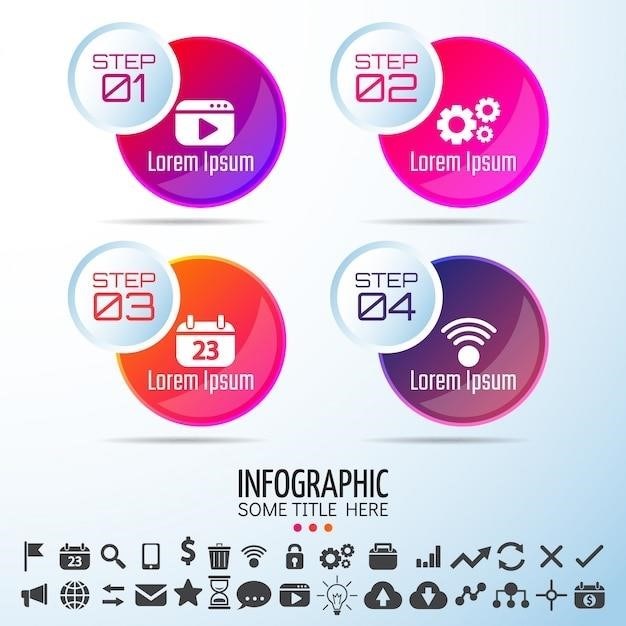Solar Charge Controller User Manual PDFs
Finding a comprehensive solar charge controller user manual in PDF format can be a lifesaver for troubleshooting, understanding features, and ensuring proper installation and operation. Many manufacturers offer these manuals online, providing detailed instructions, diagrams, and troubleshooting tips. You can easily find these user manuals by searching online for the specific brand and model of your solar charge controller.
Introduction
A solar charge controller is an essential component of any off-grid solar system, acting as the brain of the system, regulating the flow of energy from your solar panels to your batteries. It ensures that your batteries are charged efficiently and safely, preventing overcharging and damage. Understanding the workings of your solar charge controller is crucial for maximizing the performance and longevity of your solar system. This user manual provides a comprehensive guide to the operation, installation, and maintenance of your solar charge controller, empowering you to harness the power of the sun effectively;
This manual will delve into the fundamental concepts of solar charge controllers, outlining their key features, types, and how they function within a solar system. You’ll gain insights into the two primary types of controllers⁚ Pulse Width Modulation (PWM) and Maximum Power Point Tracking (MPPT), understanding their strengths and limitations. We’ll guide you through the process of choosing the right solar charge controller for your specific needs, considering factors like battery type, solar panel capacity, and power requirements.
Detailed instructions on installing and connecting your solar charge controller will be provided, ensuring a safe and efficient setup. We’ll cover essential safety precautions, troubleshooting tips, and common issues that may arise. This manual will equip you with the knowledge and confidence to install, operate, and maintain your solar charge controller with ease, maximizing its performance and extending its lifespan.
Types of Solar Charge Controllers
Solar charge controllers come in two main types, each with its own advantages and disadvantages⁚ Pulse Width Modulation (PWM) and Maximum Power Point Tracking (MPPT). Understanding the differences between these types is crucial for choosing the right controller for your specific needs.
PWM (Pulse Width Modulation) controllers are simpler and often more affordable. They regulate the flow of electricity from the solar panel to the battery by switching the current on and off rapidly, adjusting the “pulse width” to control the charging rate. However, PWM controllers can be less efficient than MPPT controllers, especially in low-light conditions or when the solar panel voltage is significantly higher than the battery voltage.
MPPT (Maximum Power Point Tracking) controllers are more advanced and generally more efficient. They continuously monitor the voltage and current output of the solar panel and adjust the input to extract the maximum power possible from the panel, even under varying conditions. This results in faster charging times and improved energy harvesting, especially in situations where the solar panel voltage fluctuates.
The choice between PWM and MPPT depends on your specific needs and budget. PWM controllers are a good option for smaller systems or those with limited budget, while MPPT controllers are ideal for larger systems or those prioritizing maximum efficiency and performance.
Understanding PWM Solar Charge Controllers
Pulse Width Modulation (PWM) solar charge controllers are the simpler and more budget-friendly option for regulating the flow of electricity from solar panels to batteries. They employ a basic switching mechanism, turning the current on and off rapidly to control the charging rate. The “pulse width” of these on-off cycles determines how much power reaches the battery.
PWM controllers work by matching the solar panel voltage to the battery voltage. This means that if the solar panel voltage is higher than the battery voltage, the PWM controller will reduce the voltage by “chopping” the current into pulses, essentially “wasting” some of the excess energy. While this method is effective for basic charging, it can result in lower overall efficiency, particularly in situations where the voltage difference between the solar panel and battery is significant.
Despite their simplicity, PWM controllers are still a viable option for smaller off-grid systems or those with limited budget. They can be effective for charging lead-acid batteries and can provide a reliable charging solution for basic applications. However, for larger systems or those seeking maximum efficiency, MPPT controllers are typically the better choice.
Understanding MPPT Solar Charge Controllers
Maximum Power Point Tracking (MPPT) solar charge controllers are considered the gold standard for maximizing energy efficiency in off-grid solar systems. Unlike PWM controllers, MPPT controllers actively seek the optimal voltage and current combination for your solar panels, ensuring you capture the maximum possible power from the sun. This is achieved through a sophisticated electronic circuit that continuously adjusts the voltage and current coming from the solar panels to match the battery’s needs.
MPPT controllers work by “boosting” the voltage from the solar panels. This means they convert the higher voltage, lower current output of the solar panels into a lower voltage, higher current output, which is more suitable for charging the battery. This process allows the MPPT controller to draw more power from the solar panels, even when the solar panel voltage is lower than the battery voltage. This results in significantly higher energy efficiency compared to PWM controllers, particularly in situations where the voltage difference between the solar panel and battery is significant.
While MPPT controllers are more expensive than PWM controllers, their superior efficiency can make them a worthwhile investment for larger off-grid systems. They can also improve charging performance for lithium batteries, which are becoming increasingly popular for their higher energy density and longer lifespan.
Key Features of Solar Charge Controllers
Solar charge controllers are the brains of your off-grid solar system, ensuring the safe and efficient charging of your batteries. They come equipped with a variety of features designed to protect your batteries, optimize charging efficiency, and provide you with valuable system information. Here are some key features to look for in a solar charge controller user manual⁚
• Battery Type Compatibility⁚ Different solar charge controllers are designed to work with specific battery types, such as lead-acid (flooded, gel, AGM), lithium-ion, or lithium-iron phosphate (LiFePO4). It’s crucial to select a controller compatible with your chosen battery type to ensure optimal charging and longevity.
• Multi-Stage Charging⁚ Modern solar charge controllers employ multi-stage charging algorithms to maximize battery life. These stages typically include bulk charging, absorption charging, float charging, and equalization charging, each tailored to specific battery characteristics. Understanding these stages will help you monitor your battery’s charging progress and ensure optimal performance.
• Overload Protection⁚ Solar charge controllers safeguard your system from overloads by limiting the current flowing to the battery. This prevents damage from excessive current and ensures a stable charging process.
• Temperature Compensation⁚ Battery charging efficiency can be affected by temperature fluctuations. Some controllers feature temperature compensation, which automatically adjusts charging parameters based on the battery’s temperature, ensuring optimal charging performance in various conditions.
• Monitoring and Display⁚ Many solar charge controllers feature LCD displays or digital interfaces that provide valuable system information, such as battery voltage, charging current, solar panel voltage, and system status. These displays enable you to monitor your system’s performance and troubleshoot any potential issues.
Choosing the Right Solar Charge Controller
Selecting the right solar charge controller is crucial for the efficient and reliable operation of your off-grid solar system. To make an informed decision, consider the following factors⁚
• Battery Capacity⁚ The charge controller’s current rating should be sufficient to handle the charging current required for your battery bank. A good rule of thumb is to choose a controller with a current rating slightly higher than the maximum charging current your solar panels can deliver.
• Solar Panel Voltage⁚ The controller should be compatible with the voltage of your solar panels. Ensure the controller’s maximum input voltage exceeds the open-circuit voltage of your panels.
• Battery Type⁚ As mentioned earlier, solar charge controllers are designed for specific battery types. Choose a controller compatible with your chosen battery chemistry (e.g., lead-acid, lithium-ion) to ensure optimal charging and battery life.
• Features and Functionality⁚ Consider the features you require, such as multi-stage charging, temperature compensation, overload protection, and monitoring capabilities.
• Brand and Reputation⁚ Opt for reputable brands known for quality, reliability, and good customer support. Read reviews and user feedback to gauge the performance and reliability of different brands.
• Budget⁚ Solar charge controllers come in various price ranges. Consider your budget and prioritize the features that are most important to you.
By carefully considering these factors, you can choose the right solar charge controller that meets your specific needs and ensures optimal performance for your off-grid solar system.
Installing and Connecting Your Solar Charge Controller
Installing and connecting your solar charge controller is a crucial step in setting up your off-grid solar system. It requires careful attention to safety and proper wiring practices. Here’s a general guide, but always refer to the specific instructions in your user manual⁚
Choose a Suitable Location⁚ Select a well-ventilated, dry location that is easily accessible for maintenance. Avoid areas prone to excessive heat or moisture.
Prepare the Mounting Surface⁚ Ensure the mounting surface is sturdy and can support the weight of the controller.
Connect the Solar Panels⁚ Connect the positive (red) wire from your solar panels to the “PV+” terminal on the controller. Connect the negative (black) wire to the “PV-” terminal.
Connect the Battery⁚ Connect the positive (red) wire from your battery bank to the “Battery+” terminal on the controller. Connect the negative (black) wire to the “Battery-” terminal.
Connect the Load⁚ If you have a load (e.g., inverter, appliances), connect the positive (red) wire from the load to the “Load+” terminal on the controller. Connect the negative (black) wire to the “Load-” terminal.
Install the Temperature Sensor (if applicable)⁚ If your controller has a temperature sensor, install it according to the user manual instructions.
Double-Check Connections⁚ Before turning on the system, double-check all connections for any loose wires or incorrect polarity.
Turn on the System⁚ After verifying all connections, turn on the solar charge controller and monitor its operation.
Remember that these are general steps, and specific installation procedures may vary depending on your controller model. Always consult your user manual for detailed instructions and safety precautions.

Operating and Maintaining Your Solar Charge Controller
Once your solar charge controller is installed and connected, it’s essential to understand how to operate and maintain it effectively. This will ensure optimal performance and longevity of your off-grid solar system.
Monitor the Controller⁚ Regularly check the controller’s display for any error messages or unusual readings. This will help you detect any potential issues early on.
Adjust Settings (if necessary)⁚ Most solar charge controllers allow you to adjust settings like charging current, battery type, and equalization settings. Consult your user manual to understand how to optimize these settings for your specific battery bank and solar array.
Clean the Controller⁚ Keep the controller clean and free from dust and debris. Use a soft cloth and mild cleaning solution if needed. Avoid using harsh chemicals or abrasive materials.
Check Connections⁚ Periodically inspect all connections for any signs of looseness, corrosion, or damage. Tighten any loose connections and address any corrosion issues promptly.
Monitor Battery Health⁚ The solar charge controller plays a crucial role in maintaining battery health. Keep an eye on the battery voltage and charging stages displayed on the controller. If you notice any irregularities, consult your user manual or seek advice from a qualified technician.
Consider Battery Equalization⁚ Depending on your battery type, you may need to perform battery equalization periodically. This helps to ensure all cells in the battery bank are charged evenly. Refer to your user manual for instructions on how to perform equalization.
Backup Your Data⁚ Some controllers allow you to backup system data or settings. It’s a good practice to back up this information regularly, in case you need to restore it in the future.
By following these simple operating and maintenance tips, you can ensure that your solar charge controller remains in good working order and contributes to the long-term efficiency of your off-grid solar system.
Troubleshooting Common Issues
Even with proper installation and maintenance, solar charge controllers can sometimes experience issues. Understanding common problems and how to troubleshoot them can save you time and frustration. Here are some typical issues and potential solutions⁚
No Power Output⁚ If the controller isn’t supplying power to the battery, first verify that the solar panels are generating power. Check for loose connections at the solar panel, controller, and battery. Ensure the fuse or circuit breaker is not tripped.
Battery Not Charging⁚ If the battery isn’t charging, check the battery voltage and ensure it’s within the controller’s operating range. Verify the battery connections are secure and that the battery terminals are clean. Confirm the controller is set to the correct battery type.
Overcharging⁚ If the battery is overcharging, check the controller settings for the charging voltage and ensure it’s appropriate for your battery type. Inspect the battery for any signs of damage or swelling.
Overload Protection⁚ If the controller trips overload protection, it’s likely due to excessive load on the battery bank. Reduce the load by disconnecting non-essential appliances or devices.
Error Messages⁚ Many controllers display error messages when they encounter problems. Consult your user manual for explanations of these messages and potential solutions.
Controller Malfunction⁚ If you suspect a controller malfunction, try resetting the controller or checking its fuse. If the problem persists, contact the manufacturer or a qualified technician for assistance.
Always remember to disconnect power before working on your solar charge controller. If you’re not comfortable troubleshooting the issue yourself, consult a professional solar technician.
Safety Precautions
Solar charge controllers, while generally safe, involve working with electricity and require careful handling to prevent accidents. Always prioritize safety when installing, operating, and maintaining your solar charge controller. Here are some essential safety precautions to follow⁚
Disconnect Power⁚ Always disconnect the power source to the solar charge controller before working on it, whether it’s for installation, maintenance, or troubleshooting. This ensures you’re not exposed to live wires.
Use Proper Tools⁚ Use insulated tools and protective gear, such as gloves, when working on the controller or its wiring. These tools help prevent electrical shocks.
Avoid Water⁚ Keep the solar charge controller and its wiring away from water or moisture to prevent electrical hazards. If the controller gets wet, disconnect it and allow it to dry completely before reconnecting.
Ventilation⁚ Ensure adequate ventilation around the solar charge controller to prevent overheating. Overheating can damage the controller and pose fire hazards.
Grounding⁚ Ensure the solar charge controller and its components are properly grounded. Grounding helps prevent electrical shocks and protects against power surges.
Fuse Protection⁚ Always install fuses or circuit breakers in the wiring to protect the solar charge controller and other components from damage due to short circuits or overloads.
Professional Assistance⁚ If you’re not comfortable working with electrical systems, contact a qualified electrician or solar technician to install, maintain, or troubleshoot your solar charge controller.
By following these safety precautions, you can minimize the risk of electrical hazards and ensure a safe and efficient operation of your solar charge controller system.






